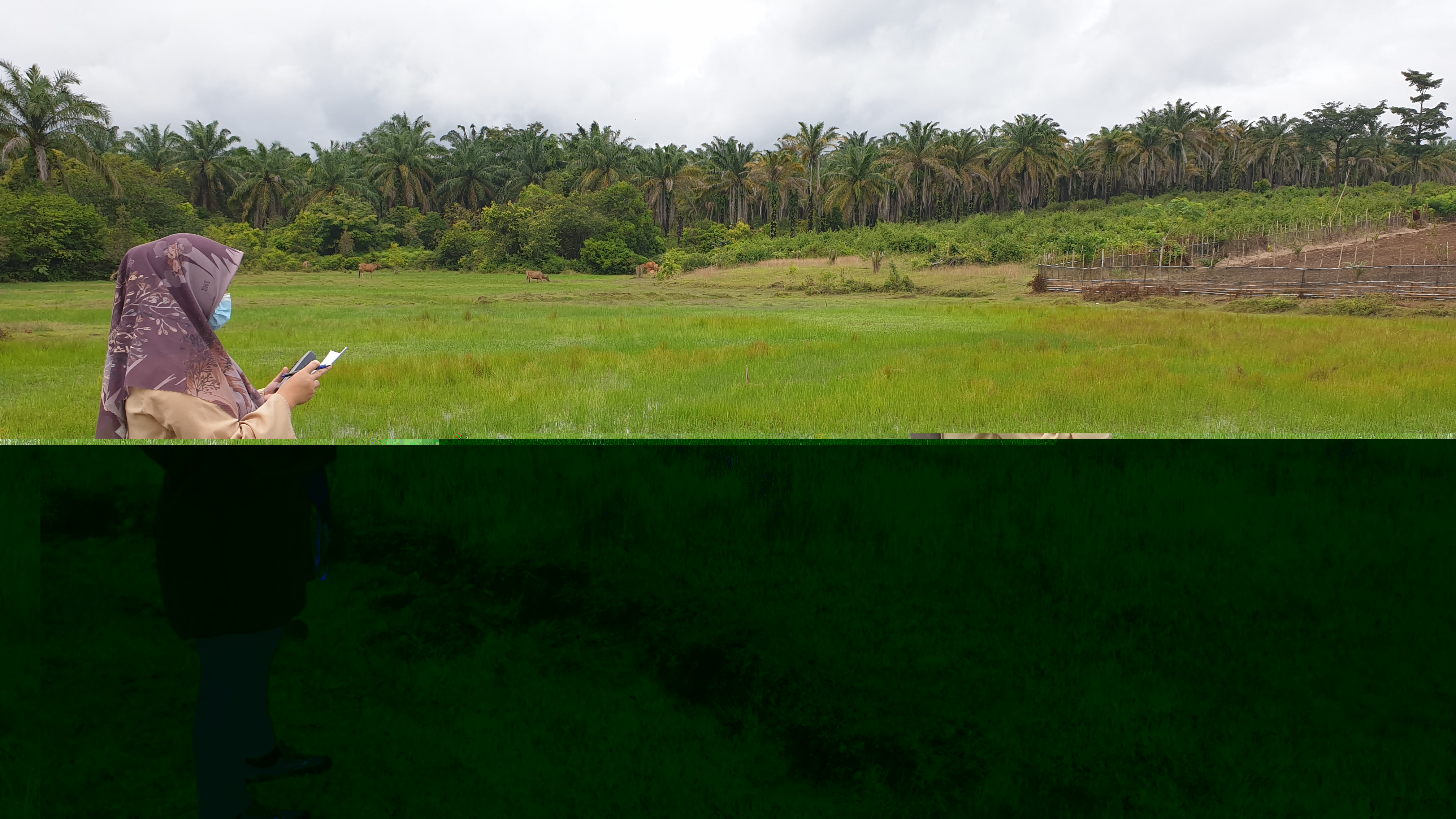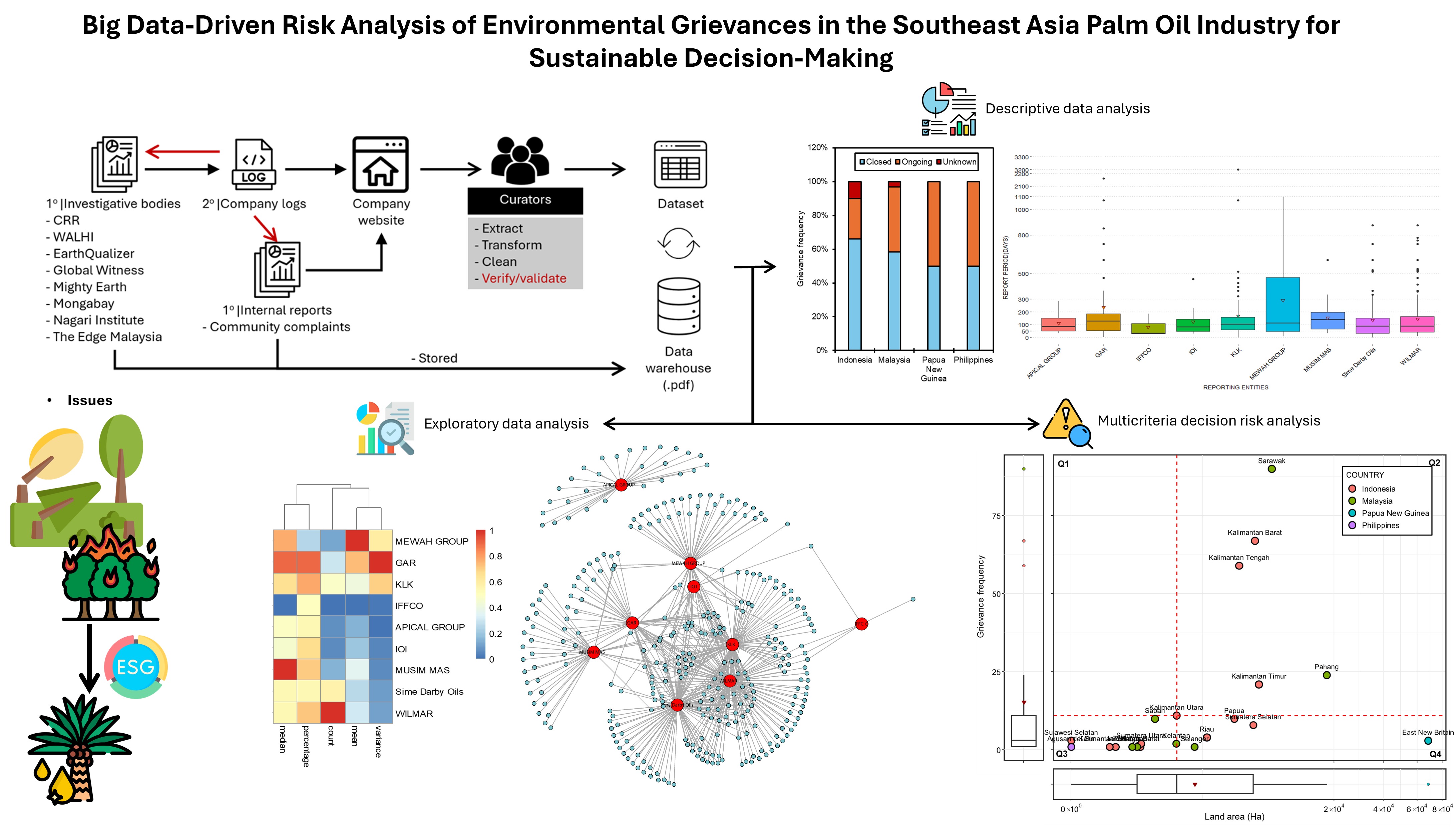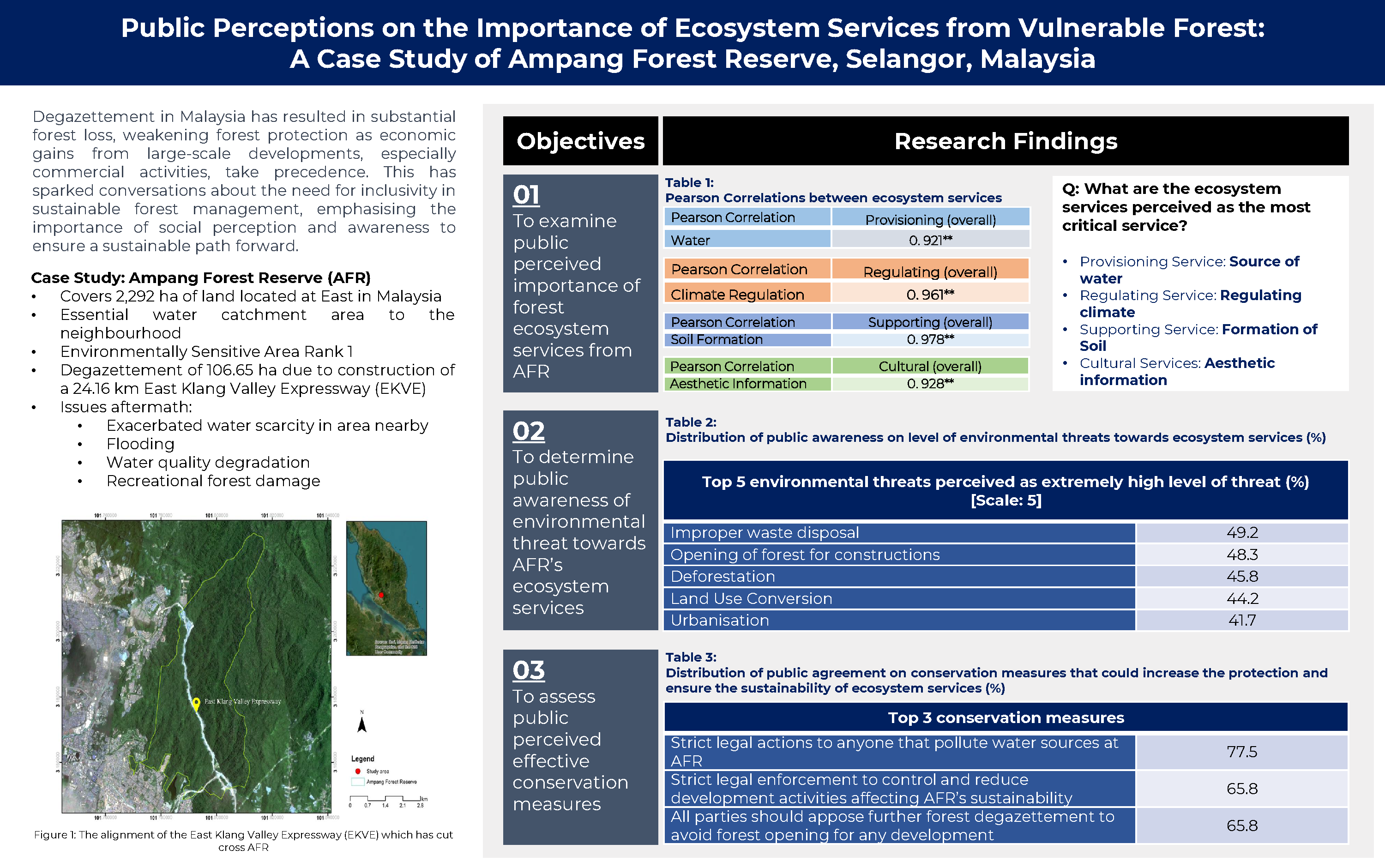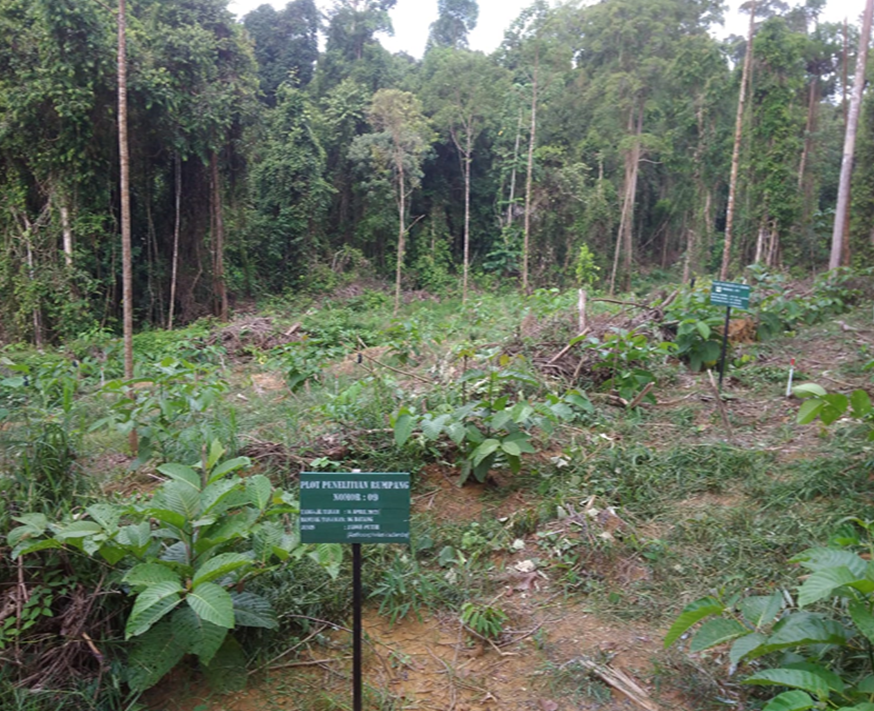Modelling for Estimation Carbon Stocks in Land Cover Using A System Dynamic Approach (Case Study: Prabumulih City, South Sumatera, Indonesia)
Abstract
Human activities, which have interfered with the ecological system, have led to global warming. This has led to the release of carbon stocks into the atmosphere, thereby reducing the function of carbon sinks in places with vegetated land. With increased human activities, vegetated land will soon become non-vegetated. This is because the increased human activities have led to the absorption of higher amounts of carbon in the atmosphere than the required level. Therefore, this study aimed to estimate land cover on carbon stocks in Prabumulih City, South Sumatera Province, Indonesia. The study employed a random field survey using a dynamic system, with the results showing that land cover consisted of oil palm plantations, mixed plantations, grass, swamp shrubs, and rivers. However, the area was dominated by rubber plantations, and as a result, the carbon stocks continued to decline. For instance, in 2008, the level of carbon stock was 2,438.72 Gg and fell to 2,190.85 Gg in 2020, indicating a 4.8% decrease. It is projected that by 2030, the carbon stock in land cover will be 1,988.07 Gg.
References
Astiani, D., Mujiman, & Rafiastanto, A. (2017). Forest type diversity on carbon stocks: Cases of recent land cover conditions of tropical lowland, swamp, and peatland forests in West Kalimantan, Indonesia. Biodiversitas, 18(1), 137–144. https://doi.org/10.13057/biodiv/d180119
Betts, R. A., Jones, C. D., Knight, J. R., Keeling, R. F., & Kennedy, J. J. (2016). El Nino and a record CO2 rise. Nature Climate Change, 6, 806–810. https://doi.org/10.1038/nclimate3063
Dewa, D. D., & Sejati, A. W. (2019). Pengaruh perubahan tutupan lahan terhadap emisi GRK pada wilayah cepat tumbuh di Kota Semarang. Jurnal Penginderaan Jauh Indonesia, 1(1), 24–31.
Elmqvist, T., Setala, H., Handel, S. N., Ploeg, S. V. D., Aronson, J., Blignaut, J. N., ..., & Groot, R. D. (2015). Benefits of restoring ecosystem services in urban areas. Current Opinion in Environmental Sustainability, 14, 101–108. https://doi.org/10.1016/j.cosust.2015.05.001
Feng, Y., Chen, S., Tong, X., Lei, Z., Gai, C., & Wang, J. (2020). Modeling changes in China’s 2000–2030 carbon stock caused by land use change. Journal of Cleaner Production, 252, 119659. https://doi.org/10.1016/j.jclepro.2019.119659
Fischer, G., Almanza-Merchán, P. J., & Ramírez, F. (2013). Source-sink relationships in fruit species: A review. Revista Colombiana de Ciencias Hortícolas, 6(2), 238–253. https://doi.org/10.17584/rcch.2012v6i2.1980
Forrester, J. W. (2016). Learning through system dynamics as preparation for the 21st century. System Dynamics Review, 32(3–4), 187–203. https://doi.org/10.1002/sdr.1571
Gómez-Baggethun, E., Gren, A., Barton, D. N., Langemeyer, J., McPhearson, T., O'Farrell, P., ..., & Kremer, P. (2013). Urbani ecosystem services. In T. Elmqvist, M. Fragkias, J. Goodness, B. Güneralp, P. J. Marcotullio, R. I. McDonald, …, & C. Wilkinson (Eds.), Urbanization, biodiversity and ecosystem services: Challenges and opportunities (pp. 175251). Springer, Dordrecht. https://doi.org/10.1007/978-94-007-7088-1
Hairiah, K., & Rahayu, S. (2007). Pengukuran karbon tersimpan di berbagai macam penggunaan lahan. Bogor: World Agroforestry Centre.
Hartrisari. (2007). Sistem dinamik: Konsep sistem dan pemodelan untuk industri dan lingkungan. Bogor: SEAMEO BIOTROP.
Helen, Jarzebski, M. P., & Gasparatos, A. (2019). Land use change, carbon stocks and tree species diversity in green spaces of a secondary city in Myanmar, Pyin Oo Lwin. PLoS ONE, 14(11), 1–23. https://doi.org/10.1371/journal.pone.0225331
[IPCC] Intergovernmental Panel on Climate Change. (2003). Good practice guidance for land use, land-use change and forestry. Kanagawa: Institute for Global Environment Strategies (IGES).
Kumar, A., & Sharma, M. P. (2015). Assessment of carbon stocks in forest and its implications on global climate changes. Journal of Materials and Environmental Science, 6(12), 3548–3563.
Mandra, M. A. S. (2013). Model dinamik pengendalian emisi kendaraan bermotor di Kota Makassar [dissertation]. Bogor: IPB University.
Maxwell, S. L., Evans, T., Watson, J. E. M., Morel, A., Grantham, H., Duncan, A., ..., & Malhi, Y. (2019). Degradation and forgone removals increase the carbon impact of intact forest loss by 626%. Science Advances, 5(10). https://doi.org/10.1126/sciadv.aax2546
Murdiyarso, D., Hergoualc'h, K., & Verchot, L. V. (2010, November 16). Opportunities for reducing greenhouse gas emissions in tropical peatlands. Proceedings of the National Academy of Sciences of the United States of America, 107(46), 19655–19660. https://doi.org/10.1073/pnas.0911966107
Musi, C., Anggoro, S., & Sunarsih. (2017). System dynamic modelling and simulation for cultivation of forest land: Case study Perum Perhutani, Central Java, Indonesia. Journal of Ecological Engineering, 18(4), 25–34. https://doi.org/10.12911/22998993/74307
Nowak, D. J., & Crane, D. E. (2002). Carbon storage and sequestration by urban trees in the USA. Environmental Pollution, 116(3), 381–389. https://doi.org/10.1016/S0269-7491(01)00214-7
Prasad, P. V. V., Thomas, J. M. G., & Narayanan, S. (2017). Global warming effects. In B. Thomas, B. G. Murray, & D. J. Murphy (Eds.), Encyclopedia of applied plant sciences (2nd ed.) (pp. 289299). Academic Press. https://doi.org/10.1016/B978-0-12-394807-6.00013-7
Pratiwi, Y., Rejo, A., Fariani, A., & Faizal, M. (2021a). Source of carbon dioxide emissions equivalent to plant-based control concept with dynamic system in Prabumulih City, South Sumatra Province. IOP Conference Series: Earth and Environmental Science, 810, 012051. https://doi.org/10.1088/1755-1315/810/1/012051
Pratiwi, Y., Rejo, A., Fariani, A., & Faizal, M. (2021b). Monitoring and prediction land cover in Prabumulih City, South Sumatera Province, Indonesia using land change modeler and multi-temporal satellite data. Ecology, Environment and Conservation Paper, 27, 334–340.
Pratiwi, Y., Dachlan, E. N., & Prasetyo, L. B. (2017, October 1920). Simulasi emisi CO2 dari penduduk dan areal persawahan menggunakan sistem dinamik [Conference presentation]. Seminar Nasional Lahan Suboptimal, Palembang, Indonesia.
Puhlick, J., Woodall, C., & Weiskittel, A. (2017). Implications of land-use change on forest carbon stocks in the eastern United States. Environmental Research Letters, 12(2), 1-13. https://doi.org/10.1088/1748-9326/aa597f
Rahman, A., & Hasan, M. (2017). Modeling and forecasting of carbon dioxide emissions in Bangladesh using autoregressive integrated moving average (ARIMA) models. Open Journal of Statistics, 7, 560–566. https://doi.org/10.4236/ojs.2017.74038
Shifley, S. R., Moser, W. K., Nowak, D. J., Miles, P. D., Butler, B. J., Aguilar, F. X., ..., & Greenfield, E. J. (2014). Five anthropogenic factors that will radically alter forest conditions and management needs in the Northern United States. Forest Science, 60(5), 914–925. https://doi.org/10.5849/forsci.13-153
Solomon, N., Pabi, O., Annang, T., Asante, I. K., & Birhane, E. (2018). The effects of land cover change on carbon stock dynamics in a dry Afromontane forest in northern Ethiopia. Carbon Balance and Management, 13(1). https://doi.org/10.1186/s13021-018-0103-7
Sterman, J. (2002). System dynamics: System thinking and modeling for a complex world. United States: Cambridge.
Sugiri, A., & Buchori, I. (2016). Towards low emission development: Prospects of applying MBIs in the industrial sector of Central Java, Indonesia. American Journal of Environmental Sciences, 12(3), 225–236. https://doi.org/10.3844/ajessp.2016.225.236
Sukarna, R. M., Birawa, C., & Junaedi, A. (2021). Mapping above-ground carbon stock of secondary peat swamp forest using forest canopy density model Landsat 8 OLI-TIRS: A case study in Central Kalimantan Indonesia. Environment and Natural Resources Journal, 19(2), 165–175. https://doi.org/10.32526/ennrj/19/2020209
Sutaryo, D. (2009). Penghitungan biomassa sebuah pengantar untuk studi karbon dan perdagangan karbon. Bogor: Wetlands International Indonesia Programme.
[USGCRP] U.S. Global Change Research Program. (2018). Impacts, risks, and adaptation in the United Statesa: Fourth National Climate Assessment, Volume II [D. R. Reidmiller, C. W. Avery, D. R. Easterling, K. E. Kunkel, K. L. M. Lewis, T. K. Maycock, & B. C. Stewart (eds.)]. Washington DC: U.S. Global Change Research Program. https://nca2018.globalchange.gov/
Woodall, C. W., Walters, B. F., Coulston, J. W., D'Amato, A. W., Domke, G. M., Russell, M. B., & Sowers, P. A. (2015). Monitoring network confirms land use change is a substantial component of the forest carbon sink in The Eastern United States. Scientific Reports, 5,1–9. https://doi.org/10.1038/srep17028










